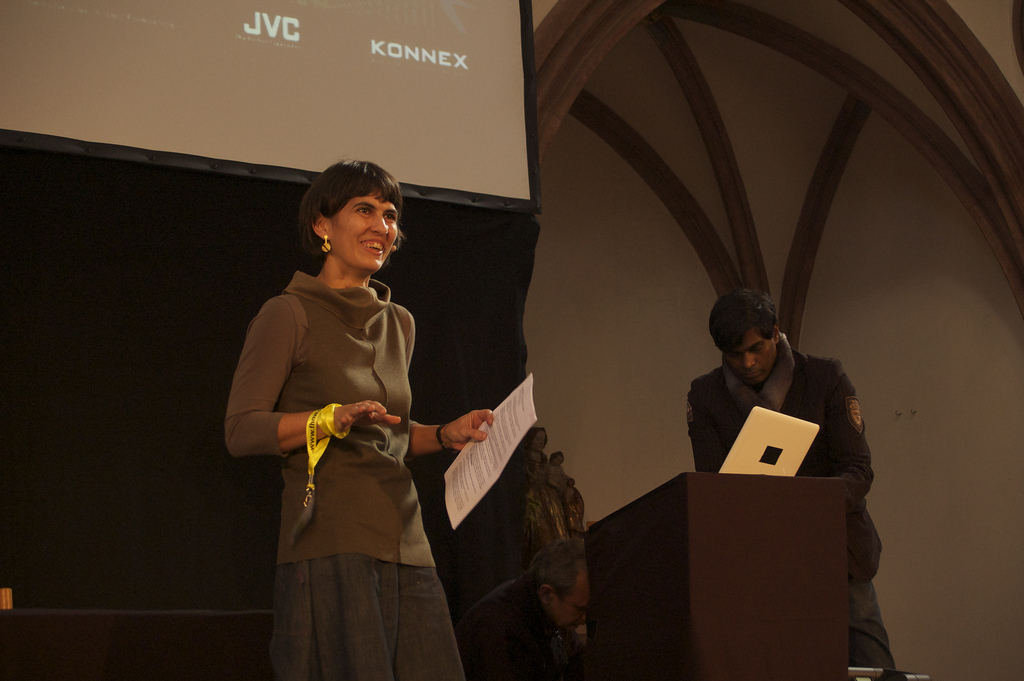In a previous post about design friction, I talk about a design fiction bibliography. Here it is thanks to Niclas Nova. I might post an updated version in a couple of months – find the original here.
- Auger, J. (2011). Alternative Presents and Speculative Futures: Designing fictions through the extrapolation and evasion of product lineages., Negotiating Futures / Design Fictions, Swiss Design Network 2011, Basel.
- Auger, J. (2013). Speculative design: crafting the speculation, Digit. Creat., vol. 24, no. 1, pp. 11–35, 2013.
- Bassett, C., Steinmuller, E. & Voss, G. (2013). Better Made Up: The Mutual Influence of Science fiction and Innovation”, Nesta Working Paper 13/07.
- Bleecker, J. (2009). Design fiction: A short essay on design, science, fact and fiction, Near Future Laboratory, Los Angeles, CA,
- Bleecker, (2011). Design Fiction: From Props To Prototypes, Negotiating Futures / Design Fictions, Swiss Design Network 2011, Basel.
- Bleecker, J. & Nova, N., (2009). A synchronicity: Design Fictions for Asynchronous Urban Computing. The Architectural League of New York, New York, NY.
- Candy, S. (2010). The futures of everyday life: politics and the design of experiential scenarios, PhD thesis. The University of Hawai.
- DiSalvo, Carl. (2012). Spectacles and Tropes: Speculative Design and Contemporary Food Cultures. The Fibreculture Journal(20).
- Dunne, A. & Raby, F. (2011). Design noir: The Secret Life of Electronic Objects. Basel: Birkhäuser, 2001.
- Dunne, A. & Raby, F. (2014). Speculative Everything: design, fiction and social dreaming. MIT Press.
- Forlano, L. (2013). Ethnographies from the Future: What can ethnographers learn from science fiction and speculative design?, Ethnography Matters.
- Franke, B. (2011). Design Fiction is Not Necessarily About the Future, Negotiating Futures / Design Fictions, Swiss Design Network 2011, Basel.
- Galloway, A. (2013). Towards Fantastic Ethnography and Speculative Design, Ethnography Matters.
- Grand, S. & Wiedmer, M. (2010). Design Fiction: A Method Toolbox for Design Research in a Complex World, DRS, 2010.
- Hales, D. (2013). Design fictions an introduction and provisional taxonomy, Digital Creativity, 24:1, 1-10
- Jain, A., Ardern, J. & Pickard, J. (2012). Design Futurescaping, Journal of Futures Studies.
- Johnson, B.D. (2009). “Science Fiction Prototypes Or: How I Learned to Stop Worrying about the Future and Love Science Fiction”, in Intelligent Environments 2009 – Proceedings of the 5th International Conference on Intelligent Environments, Callaghan, V., Kameas, A., Reyes, A., Royo, D., Weber, M. (Eds.), IOS Press, Barcelona pp. 3-8.
- Johnson, B.D. (2011). “Love and God and Robots: The Science Behind the Science Fiction Prototype “Machinery of Love and Grace””, in Workshop Proceedings of the 7th International Conference on Intelligent Environments Augusto, J. C., Aghajan, V., Callaghan, V., Cook, D. J., O’Donoghue, J., Egerton, S., Gardner, M., Johnson, B. D., Kovalchuk, Y., López-Cózar, R., Mikulecký, P., Ng, J. W. P., Poppe, R., Wang, M. J., Zamudio, V. (Eds.), IOS Press, Nottingham pp. 99-127.
- Kirby, D. (2010). The future is now: Diegetic prototypes and the role of popular films in generating real-world technological development. Social Studies of Science 40 (1), pp. 41-70.
- Kirby, D., 2011 Lab coats in Hollywood: science, scientists and cinema. MIT Press, Cambridge, MA.
- Morrison, A. (2014). Design Prospects: Investigating Design Fiction via a Rogue Urban Drone, In Proceedings of DRS 2014 Conference. Umeå, Sweden.: 16.06.2014–19.06.2014
- Raford, Noah. (2012). From Design to Experiential Futures, The Future of Futures: The Association of Professional Futurists.
- Shedroff N. & Noessel C. (2012). Make It So Interaction Design Lessons from Science Fiction. San Francisco: Rosenfeld.
- Sterling, B. (2009), Design Fiction, Interactions 16 (3), pp. 20-24.
- Ward, M. (2013). Design Fiction as Pedagogic Practice Towards a fictionally biased design education, Medium.
- Zeller, L. (2011) What You See Is What You Don’t Get: Addressing Implications of Information Technology through Design Fiction” Lecture Notes in Computer Science 6770 pp. 329-336.









